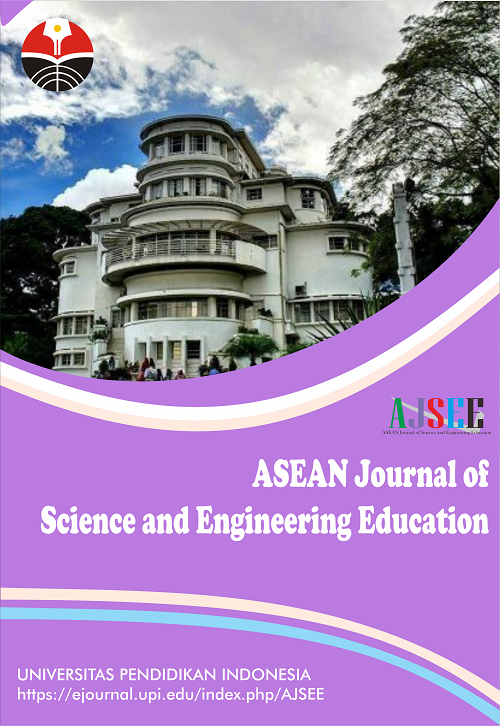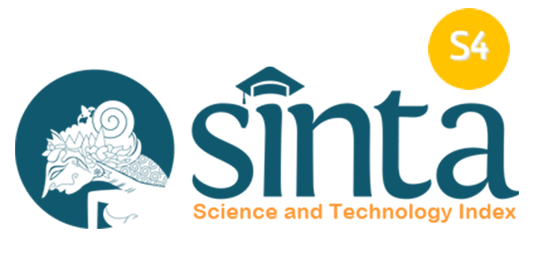Causes of Students’ Reluctance to Participate in Classroom Discussions
Abstract
Keywords
Full Text:
PDFReferences
Abdullah, M. Y., Bakar, N. R. A., and Mahbob, M. H. (2012). Student's participation in classroom: What motivates them to speak up?. Procedia-Social and Behavioral Sciences, 51, 516-522.
AlKandari, N. (2012). Students' communication and positive outcomes in college classrooms. Education, 133(1), 19-30.
Alshoraty, Y. I. (2014). Reasons for University Students' non-participation in class discussions. European Journal of Social Sciences, 42(2), 272-277.
Aziz, F., Quraishi, U., and Kazi, A. S. (2018). Factors behind classroom participation of secondary school students (A Gender Based Analysis). Universal Journal of Educational Research, 6(2), 211-217.
Bernales, C. (2016). Towards a comprehensive concept of willingness to communicate: Learners' predicted and self-reported participation in the foreign language classroom. System, 56, 1-12.
Brigui, H. (2017). The relationship between Moroccan EFL University Students' motivation orientation and their classroom participation: exploring the variables of gender and proficiency level. Journal of Education and Practice, 8(3), 108-112.
Choi, J. Y. (2015). Reasons for silence: a case study of two Korean students at a us graduate school. TESOL Journal, 6(3), 579-596.
Dawit, T. A., Deneke, D. G./T. (2015). Causes of students' limited participation in EFL classroom: Ethiopian public universities in focus. International Journal of Educational Research and Technology, 6(1), 74-89.
Dukuzumuremyi, S., and Siklander, P. (2018). Interactions between pupils and their teacher in collaborative and technology-enhanced learning settings in the inclusive classroom. Teaching and Teacher Education, 76, 165-174.
Eddy-U, M. (2015). Motivation for participation or non-participation in group tasks: A dynamic systems model of task-situated willingness to communicate. System, 50, 43-55.
Frambach, J. M., Driessen, E. W., Beh, P., and Van der Vleuten, C. P. (2014). Quiet or questioning? Students' discussion behaviors in student-centered education across cultures. Studies in Higher Education, 39(6), 1001-1021.
Hajimohammadi, R., and Makundan, J. (2011). Impact of Self-Correction on Extrovert and Introvert Students in EFL Writing Progress. English Language Teaching, 4(2), 161-168.
Hamouda, A. (2013). An exploration of causes of Saudi students’ reluctance to participate in the English language classroom. International Journal of English Language Education, 1(1), 17-34.
Leonard, N. R., Gwadz, M. V., Ritchie, A., Linick, J. L., Cleland, C. M., Elliott, L., and Grethel, M. (2015). A multi-method exploratory study of stress, coping, and substance use among high school youth in private schools. Frontiers in psychology, 6, 1028.
Mahdikhani, M., Soheilahamzehloo, Maryamshayestefard, andMahdikhani, N. (2015). Student participation in classroom discussions. International Journal of Science and Research (IJSR., Index Copernicus Value (2013): 6.14 Impact Factor (2015): 6.391. Retrieved from https://www.ijsr.net/archive/v5i6/ NOV164514.pdf
Mainwaring, L. M., and Krasnow, D. H. (2010). Teaching the dance class: Strategies to enhance skill acquisition, mastery and positive self-image. Journal of Dance Education, 10(1), 14-21.
Parks‐Stamm, E. J., Zafonte, M., and Palenque, S. M. (2017). The effects of instructor participation and class size on student participation in an online class discussion forum. British Journal of Educational Technology, 48(6), 1250-1259.
Patall, E. A., Hooper, S., Vasquez, A. C., Pituch, K. A., and Steingut, R. R. (2018). Science class is too hard: Perceived difficulty, disengagement, and the role of teacher autonomy support from a daily diary perspective. Learning and Instruction, 58, 220-231.
Precourt, E., and Gainor, M. (2019). Factors affecting classroom participation and how participation leads to a better learning. Accounting Education, 28(1), 100-118.
R. Richards, K. A., Hemphill, M. A., and Templin, T. J. (2018). Personal and contextual factors related to teachers’ experience with stress and burnout. Teachers and Teaching, 24(7), 768-787.
Roberts, A., and Friedman, D. (2013). The impact of teacher immediacy on student participation: An objective cross-disciplinary examination. International Journal of Teaching and Learning in Higher Education, 25(1), 38-46.
Rocca, K. A. (2009). Participation in the college classroom: The impact of instructor immediacy and verbal aggression. Journal of Classroom Interaction, 43(2), 22 - 33.
Sadeghi, R., Sedaghat, M. M., and Ahmadi, F. S. (2014). Comparison of the effect of lecture and blended teaching methods on students’ learning and satisfaction. Journal of advances in medical education and professionalism, 2(4), 146.
Sari, D. (2017). Speaking anxiety as a factor in studying EFL. English Education Journal, 8(2), 177-186.
Savaşçı, M. (2014). Why are some students reluctant to use L2 in EFL speaking classes? An action research at tertiary level. Procedia-Social and Behavioral Sciences, 116, 2682-2686.
Stanulis, R. N., Little, S., and Wibbens, E. (2012). Intensive mentoring that contributes to change in beginning elementary teachers’ learning to lead classroom discussions. Teaching and Teacher Education, 28(1), 32-43.
Tom, A. A., Johari, A., Rozaimi, A., and Huzaimah, S. (2013). Factors contributing to communication apprehension among pre-university students. Academic Journal of Interdisciplinary Studies, 2(8), 665-665.
Wassermann, S. (2010). Effective classroom discussions. Educational Leadership, 67(5), 1-6.
Weda, S., and Sakti, A. E. F. (2018).Factors influencing students’ anxiety in English as a Foreign Language classroom. Journal of Physics, 1028(1), 012100
Zarrinabadi, N. (2014). Communicating in a second language: Investigating the effect of teacher on learners' willingness to communicate. System, 42, 288-295.
DOI: https://doi.org/10.17509/ajsee.v1i1.32407
Refbacks
- There are currently no refbacks.
Copyright (c) 2021 Universitas Pendidikan Indonesia

This work is licensed under a Creative Commons Attribution-ShareAlike 4.0 International License.














